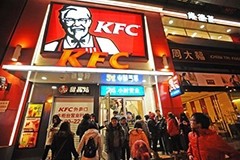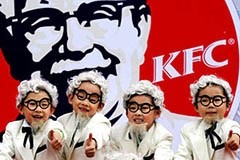Flipping and frying in China’s complex fast food market

According to sources speaking to the Wall Street Journal, Dairy Queen and Papa John’s are the latest American exports to the Far East to have come under the radar of private equity firms keen to tap into the brands’ early-day success.
And just this week, Yum-owned KFC was named China’s most powerful international brand, after beating off long-established names like Coca-Cola and McDonald’s to the top spot.
However, amid tales of Yum planning a further 700 new outlets this year, and other brands eyeing an entry into the country, it’s worth putting the figures into context.
Growth slowing
China’s statistical office has revealed that the fast-food industry had been growing at a double-digit rate, in terms of new joints opening across the country, until 2010. The following year, this rate had arrested to 6.5%, and Euromonitor, the market research company, estimates this figure will continue downhill, to just 3.8% by 2015.
And while the world assesses the impact the likes of Yum and McDonald’s have had on China, the reality is that independent operators account for an enormous 98% of the number of fast-food outlets and 84% of the market, again according to Euromonitor.
By far the leader in this segment is KFC, which has increased its market share from less than 5% in 2007 to 6.5% last year, making the chicken chain almost three times the size of China’s second-largest operator, McDonalds - and at 4,000 to 2,000 restaurants respectively, it also has twice the outlets.
While China’s fast-food sales rose from US$47bn in 2007 to US$106bn last year, at the same time it is tough going for internationals who are now being forced to face higher rents and a slowing economy as they expand. As a result, McDonald’s revealed last month that it has reduced its forecast for the number of new restaurants it will open in the country.
Pounding the headlines
And in spite of Yum’s seemingly successful charge, its shareholders witnessed a 15% drop in second-quarter earnings two weeks ago. This has come on the back of unending press reports based on food safety fears, such as an avian flu outbreak earlier this year and allegations last December that some of Yum’s suppliers in China had injected chicken with growth hormones and antiviral drugs beyond food safety limits.
Analysts, however, say this will be a temporary blip in Yum’s fortunes, and the overall industry is beginning to rationalise.
But there’s no doubt it is a complex market - not least when, according to a Mintel report, the majority of Chinese would prefer to eat at Western chains, albeit on Chinese products; and at the same time, local chains are gaining in their appeal, and customers are increasingly returning to local products and brands.
In response, there is a trend towards organisation among domestic players, which are more and more looking at expansion and developing their brands, with some of them even offering Western-style food, albeit at a cheaper price point than the internationals.
So there’s no doubt it’s getting tough out there in China’s fast-food market, and will remain so not just for the likes of Yum and McDonald’s but also for the local brands. In such a complex industry, there’s plenty of fast food for thought.







